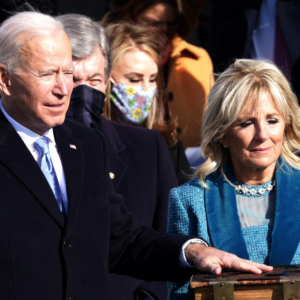Imagine your favorite teacher from grade school. Now, imagine that class without your beloved teacher. Would the lessons you learned be the same? Would the memories you cherish remain? They would most definitely have changed.
With another World Teachers’ Day (October 5) behind us, it is important to recognize the hard work and dedication of teachers worldwide.
In the classroom, the teacher is in charge. Teachers create the lesson plans, draft syllabi, and share their knowledge with a room of eager students. In other words, the material that children learn and how well they can grasp it depends greatly on the teacher. The more passion and training that teachers have, the better they will teach.
Unfortunately, the teaching profession is no longer as attractive or prestigious a career to those looking to join the work force as it once was. Teaching is different from other occupations because teachers tend to be motivated by altruism and genuine care for future generations, not so much by the money attached to their work. The United Nations Educational, Scientific and Cultural Organization (UNESCO) notes that worldwide, teachers’ salaries are lower than their living wages, which most likely accounts for the decreasing interest in teaching.
Though the number of teachers in schools decreases, the primary school enrollment rate continues to skyrocket. In the Central African Republic (CAR), there are roughly 138 pupils to every teacher. It comes as no surprise that several countries in Sub-Saharan Africa (namely Burkina Faso, Eritrea, and CAR) lag behind other regions in terms of number of current teachers. However, as a region, they should account for two-thirds of the total number of teachers needed worldwide by 2030.
Although education is often seen as the key to development, there is still a significant deficit in budgets allocated for global education. Many countries focus their educational budgets on schools in main cities and turn a blind eye to schools catering to the most marginalized youth. The clear solution for increasing the number of trained teachers in the classroom is to raise more money.
The United Nations calls on countries with high populations of children out of school to increase their educational budget and to include funding for teacher training programs. The BBC claims that Nigeria, with the highest number of out-of-school children, would need an additional $1.8 billion to reach their target number of teachers. More teachers are needed to reduce the student-to-teacher ratio, making education more personal and adapted to each pupil. In order to attract and retain more teachers, countries must reassess their budgets and place teacher development at the core.
Many organizations, such as the Global Partnership for Education (GPE), are working hard alongside the United Nations in critical fundraising efforts for global education by reaching out to governments, policy officials, the private sector, and individuals. One of GPE’s objectives is to promote access for all: “all children have access to a safe, adequately equipped space to receive an education with a skilled teacher”. More concretely, according to a United Nations assessment, GPE has provided funds to train 337,000 teachers worldwide. In GPE-sponsored countries, the completion rate for students attending primary school has increased from 61% to 75%, which I believe can be attributed (at least partly) to the increase in funds that in turn led to better trained teachers.
Although GPE has made strides in fundraising and building awareness, it has been criticized by institutions such as the Brookings Institution and 100Reporters for its inability to deliver on promises (i.e., promoting inclusive education, bettering aid effectiveness, and ensuring that children in early grades can read) it has made, especially regarding the evaluation and transparency of aid distribution and its effectiveness. One important critique of GPE is that it discriminates against providing resources to non-low-income countries or fragile states, which brings into question its mission statement. Since it is only focusing on bettering access to education in low-income countries, schools in countries affected by humanitarian crises are overlooked.
With a shortage of educators and teaching an unpopular profession, countries are trying to compensate by hiring more and more unskilled teachers who, in the end, will do more harm than good, as seen by the quality of education received by the students. This is not unique to the developing world. As GPE notes, “in 2014…250 million children are still not able to read and write by the time they reach Grade 4.” That translates to roughly 38.5% of primary school aged children being unable to complete basic tasks within the classroom. Without well-trained teachers, increasing the number of literate children globally will not be possible.
In the United States, we have seen the emergence of teaching programs such as Teach for America (TFA), which engages new and inexperienced college graduates in 2-year paid positions as teachers in the classrooms of underserved communities. As stated on TFA’s website: “Some corps members were educators prior to joining, but many do not have any prior experience in the education field.” Corps members participate in a mandatory five-week training program during the summer prior to their placement, but is that enough?
Many people criticize TFA and its mission statement, including writers from The Huffington Post, Harvard Magazine, and the Washington Post. Other sites have surfaced, such as Students Against TFA, a campaign dedicated to showcasing the downfalls of the program. Students Against TFA provides vital testimonies from past TFA Corps members who are not content with their experiences.
“The institute left us poorly prepared to enter the classroom, but even more troubling to me than the lack of good preparation was the fact that we were using local summer school students as guinea pigs for our training – students who desperately needed to use their summer school time effectively.” – Emmanuel Parello, 2007 Los Angeles TFA Alumnus
“I joined Teach for America when I graduated from undergrad with the intention of using it as a tool to get me in a school and teach for the rest of my life. Much to my surprise, I found out rather quickly how TFA has no intention of creating life-long educators. It’s evident from the first day of training (called Summer Institute) that these [CMs] that signed up had no intention of teaching more than the 2 year requirement. The vast majority were white, very privileged, and had just about no contact with individuals (particularly those of color) from urban communities.” – 2012 Los Angeles TFA Corps Member
In response to harsh critiques, Teach for America is trying a new program in which college juniors undergo yearlong training to better prepare them for their experiences. But the question remains: if there are teachers with degrees in education still struggling to minimize the achievement gap for children worldwide, how can we expect new college graduates to do better?
Similar teaching programs, such as Teach for China and Teach for India, have emerged overseas to attract young American students fresh out of undergrad to participate in 2-year teaching fellowships in low-income areas. Similar to TFA, both programs boast about a 5-week training program that fellows are required to complete prior to placement. At the end of their 2-year fellowship periods, most students (non-Chinese or non-Indian citizens) return to their countries and leave the classroom and the teacher force.
What message are we sending to the youth of tomorrow about the ease of becoming teachers? What message are we sending to other teachers about the rigor of their profession? By making it seem easy, teaching becomes a fallback profession, an out for students who are not sure about their post-graduation goals. We shrink the role of educators in our society and make it seem as if anyone, anywhere, can be a teacher.
Instead of bringing more inexperienced teachers into the classrooms for the short-term, resources need to be mobilized to provide further training to teachers already in them to promote teaching as a career with longevity. In order to do this, educational budgets in at-risk countries must be revised to include better training programs for teachers as well as an increase in their annual salaries. “Teachers are the core of any education system,” says Irina Bokova, UNESCO’s director. “Hiring and training new and already established teachers is fundamental to protecting children’s ability to learn in school.” While ‘Invest in the future, invest in teachers’, the slogan of World Teachers’ Day, is not a phrase you often read in the newspaper, perhaps it is time it should be.





